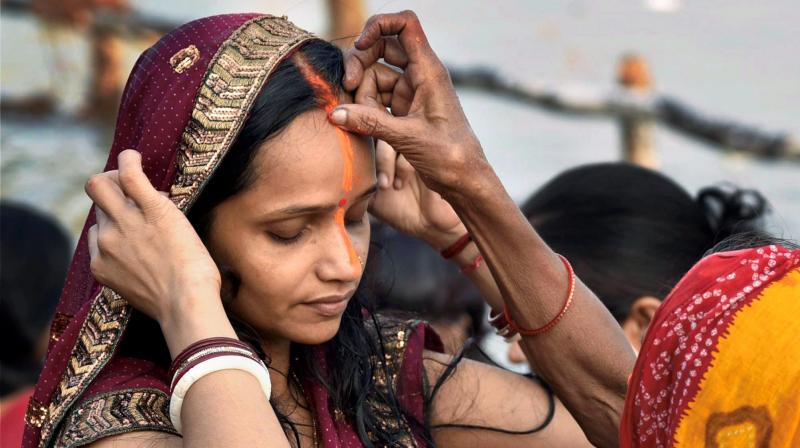Here are 5 lesser known facts about Chhath Puja that might leave you impressed

“Chhath” denotes numerical 6 in Hindi and the festival commences on the sixth day of the Hindu Lunar month of Kartik. The celebration carries on for four days during which devotees, mostly women, follow rigorous rituals including fasting for 36 hours at a stretch, having a holy dip in the River Ganga at sunrise and sunset and eating food that has been cokked sans salt, onion or garlic.
Dedicated to the Sun and his wife Usha, the puja is to thank them for bestowing the bounties of life on earth.
While the exact origins of the festival still remain shrouded in mystery, legends offer two views. One says that since Lord Rama was a descendant of the Sun god, some say he, on returning to Ayodhya after the exile, observed a fast in honour of the Sun god and broke it only at the break of dawn next day--a ritual that subsequently evolved into the Chhath Puja.
Another legend goes that the prominent mythological character Karna would religiously offer prayers while standing in the water and distribute prasad among the needy. That started the Chhath Puja.
This festival is observed by Nepalese and Indian people, along with their diaspora.
Chhath is an ancient Hindu Vedic festival historically native to the Madhesh province and Mithila region of Nepal and Bihar, Jharkhand, Eastern Uttar Pradesh provinces of India.
Here are a few lesser known facts about Chhath Puja:
Chhath Puja is perhaps the only Vedic Festival celebrated in India: One of most ancient Hindu festivals ever surviving on earth, the puja first finds mention in the Rig Veda which contains hymns worshiping the Sun God and describes similar rituals.
Chhath Puja hails back to the time of the Mahabharata: Apart from the legend of Karna, it is believed that Draupadi was an ardent devotee of the Sun god. Due to her devotion toward Surya, she was gifted with the unique power to cure even the most deadliest diseases. This power and energy of Draupadi helped Pandavas to survive and win the Battle of Kurukshtera, thus defeating the Kauravas and regaining their lost kingdom.
Perhaps the only Hindu Festival with rituals that have scientific reasons to back them: Some say that the process and rituals of the Chhath puja aim at preparing the body and mind of the devotee for cosmic solar-energy-infusion. This is something similar to what sages would do in the days of the yore. It is a sort of detoxification process that rejuvenates the body and mind.
Rituals are designed around the optimum absorption of Vitamin D and Calcium into body along with other health benefits: Chhath Puja is usually celebrated at the onset of winter. The worship of the Sun God, at the onset of winter allows for the absorption of Vitamin D (essential for the absorption of calcium and the prevention of rickets in children and osteomalacia in adults) from UVB rays which are predominant at sunset and sunrise. The Vitamin D is then responsible for absorbing calcium from the food. It prepares devotees for the months ahead.
The rituals of the puja are designed as such that they stimulate a balanced secretion of the hormones of the body. Worshipping the sun at sunrise and sunset ensures that devotees can obtain optimum energy from the sun during these periods and safely harness it.
Tradition of worshiping Sun God, was also prevalent in the ancient Egyptian and Babylonian civilizations: Apart from Chhath, the ancient Egyptian god of creation, Amun is also believed to reside inside the sun. So is the Akan creator deity, Nyame and the Dogon deity of creation, Nommo. Also in Egypt, there was a religion that worshipped the sun directly, and was among the first monotheistic religions: Atenism.

